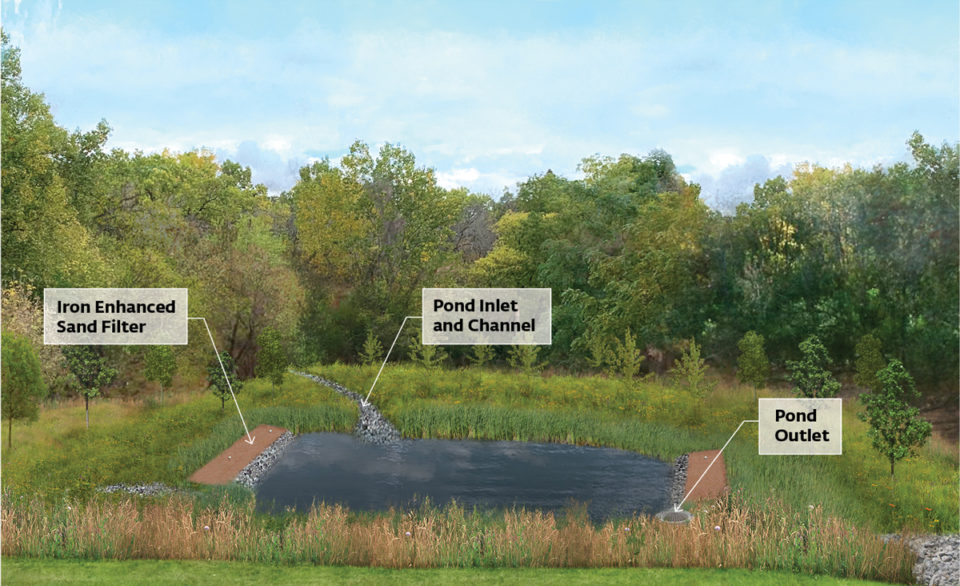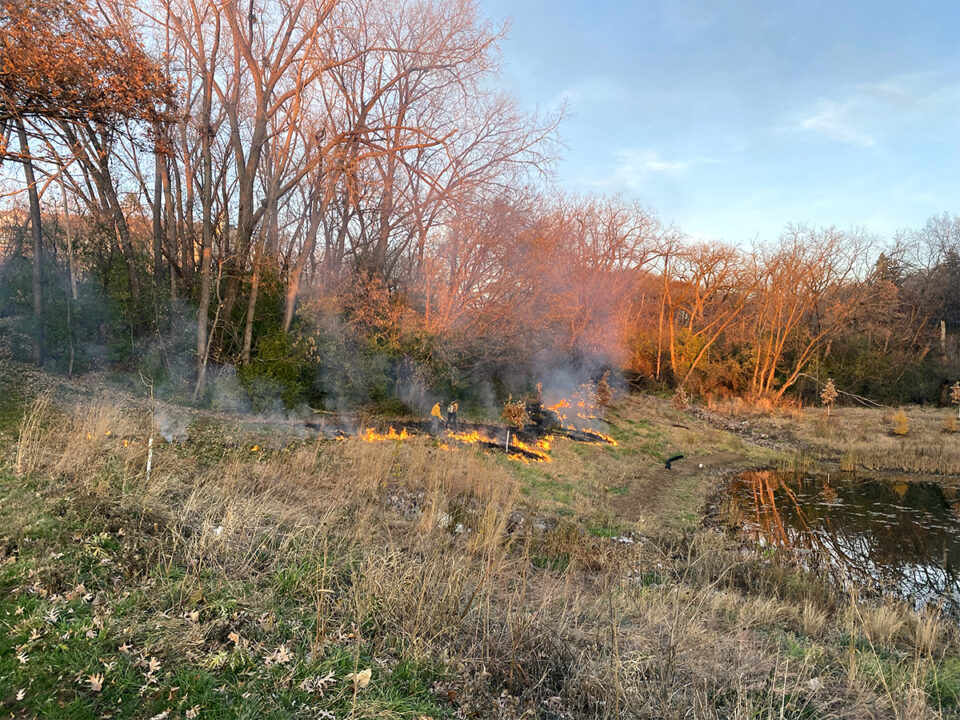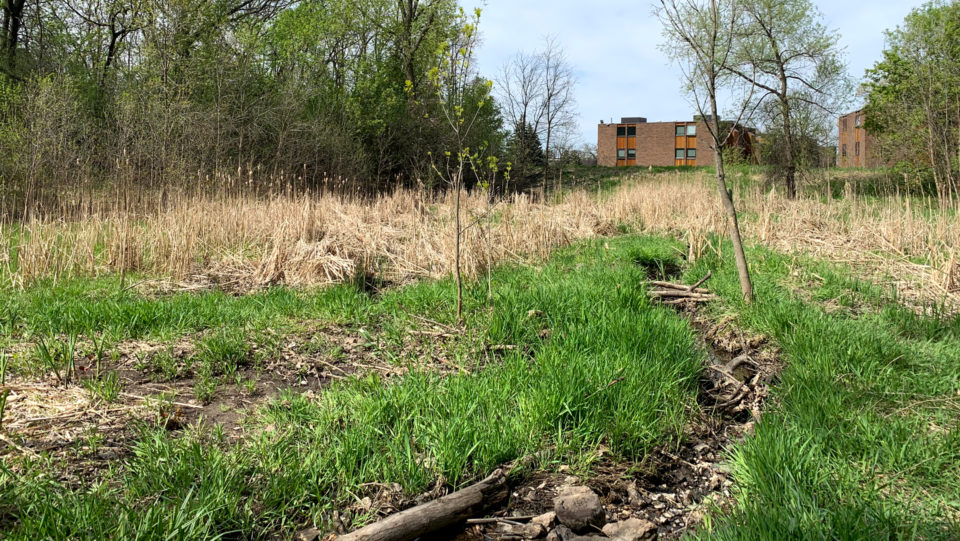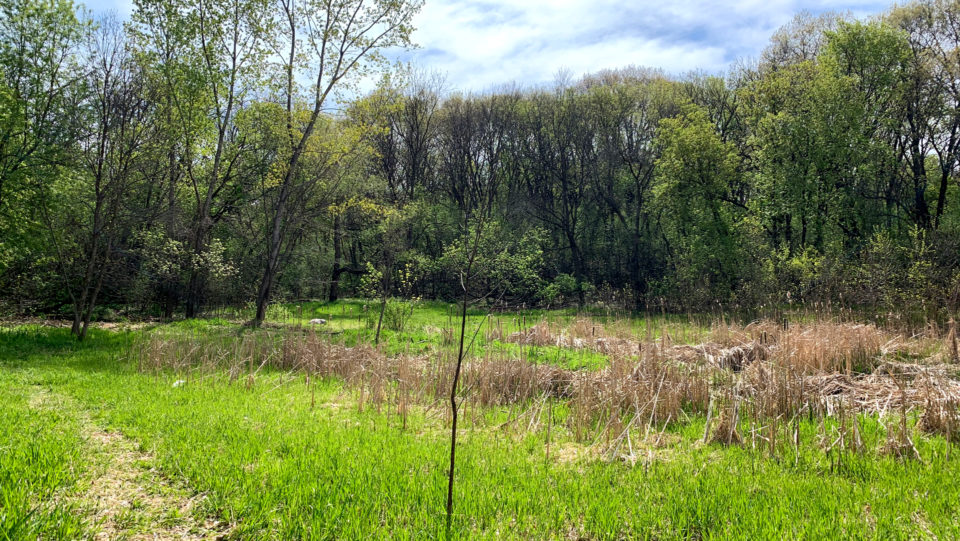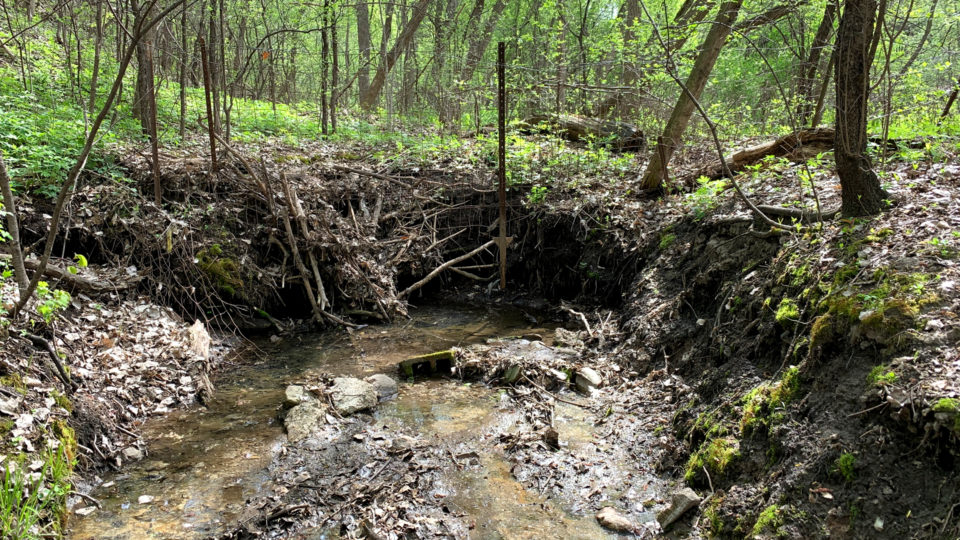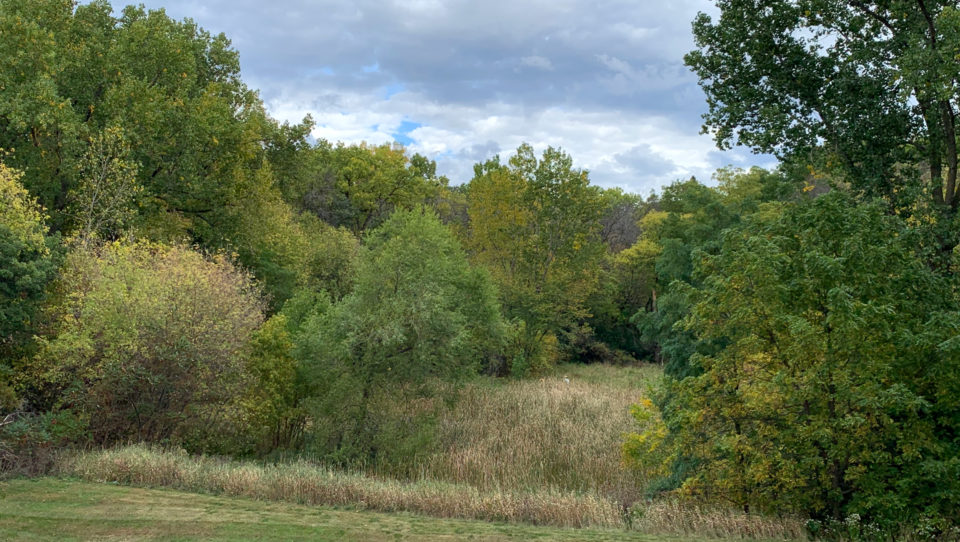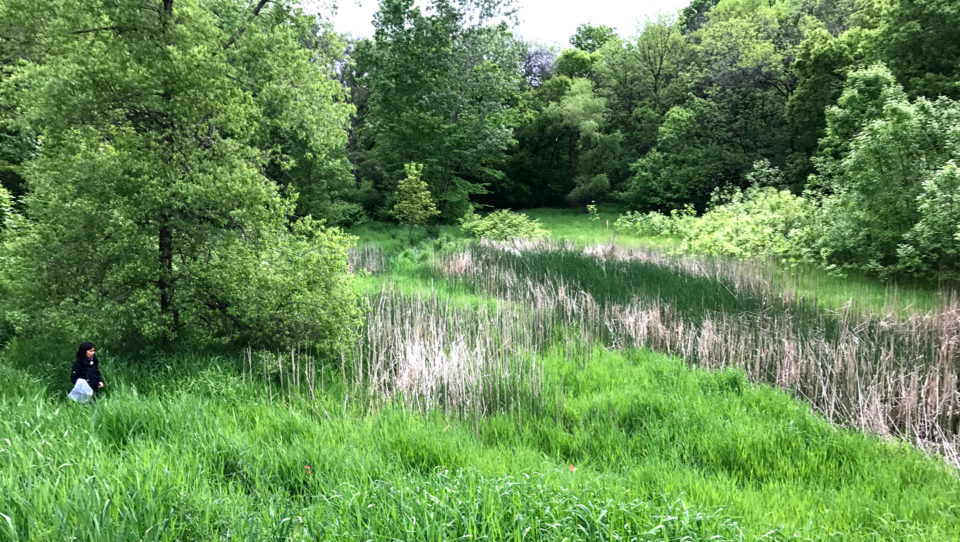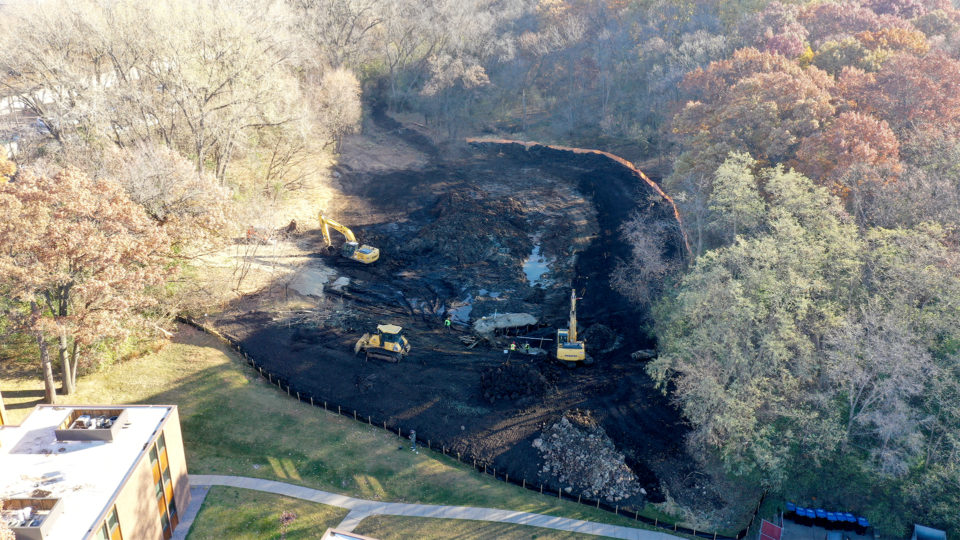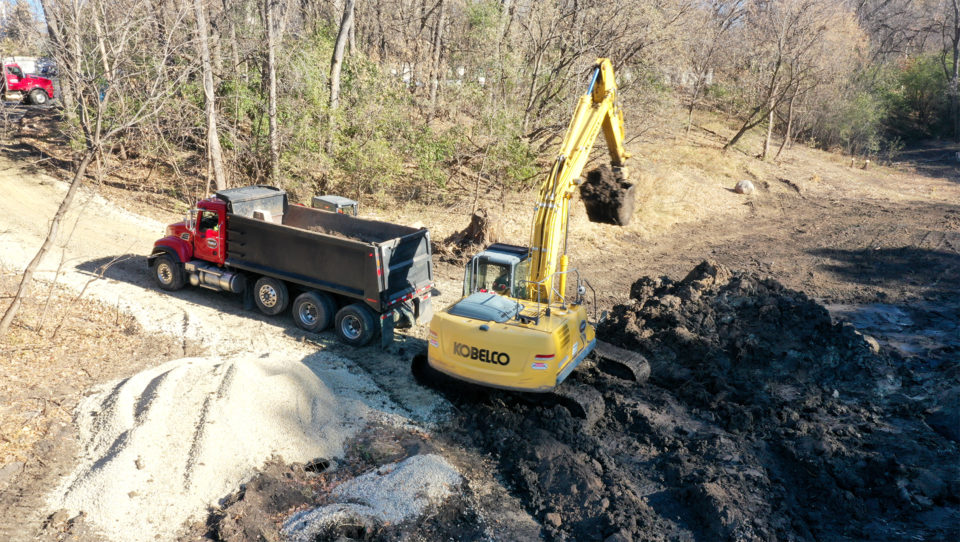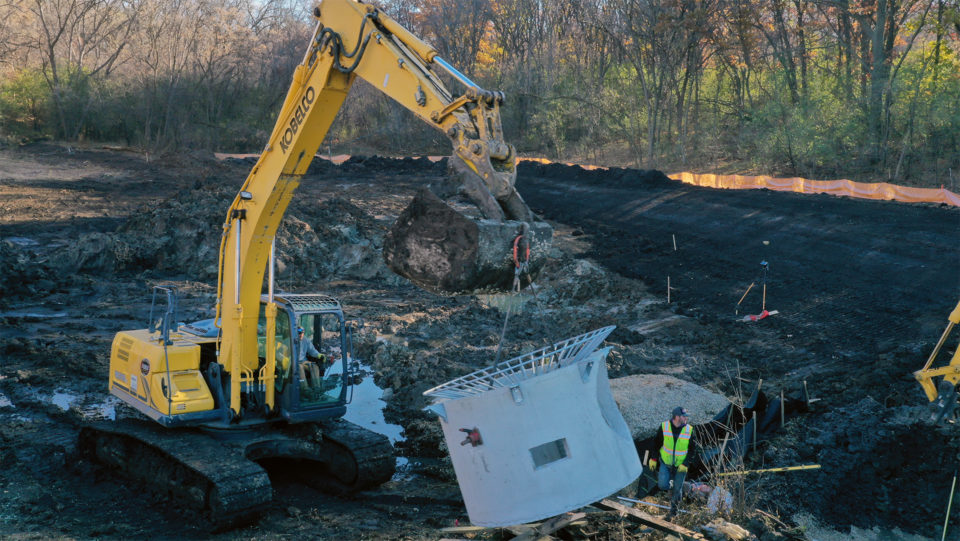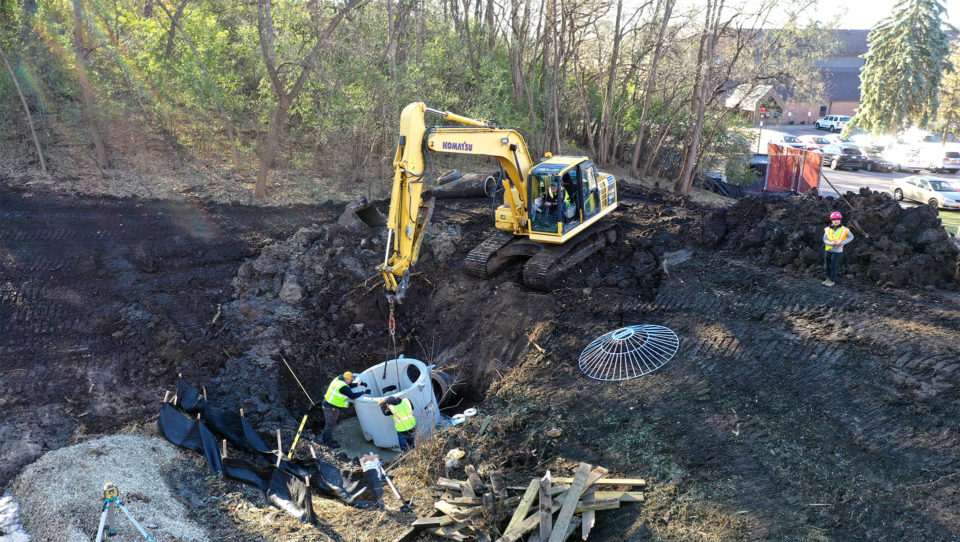Seminary Pond
Capitol Region Watershed District (CRWD), the Cities of Lauderdale and Falcon Heights, Ramsey County, and the University of Minnesota are working together to make improvements to Seminary Pond to minimize flooding and remove an estimated 2.26 tons of sediment and 10.3 pounds of phosphorous from entering the Mississippi River annually. Seminary Pond was built in the mid-1990s by the City of Lauderdale and receives stormwater runoff from a 128-acre subwatershed that extends beyond Lauderdale boundaries.
Partial funding for the project is provided by the State of Minnesota Clean Water Fund administered by Minnesota Board of Water and Soil Resources.



